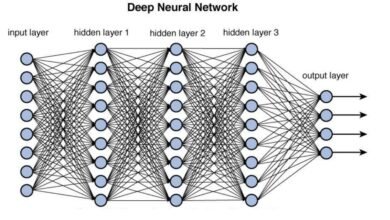Efficiency and Scalability with best exclusive Serverless Architecture

In today’s fast-paced digital landscape, serverless architecture emerges as a beacon of innovation, promising unparalleled efficiency and scalability for modern businesses. Gone are the days of managing server infrastructure and worrying about capacity planning. With serverless computing, organizations can focus on delivering value to their customers without the constraints of traditional IT infrastructure.
What is Serverless Architecture?
Serverless architecture is a cloud computing model where the cloud provider dynamically manages the allocation and provisioning of servers. In this paradigm, developers write code in the form of functions, which are executed in response to specific events or triggers. Unlike traditional server-based architectures, where servers must be provisioned and managed, serverless computing abstracts away the underlying infrastructure, allowing developers to focus solely on writing code.
Key Benefits of Serverless Architecture

1. Scaling New Heights:
At the core of serverless architecture lies its unparalleled scalability, setting it apart from traditional server-based approaches. Unlike conventional architectures that require manual provisioning of additional servers to accommodate fluctuating workloads, serverless platforms seamlessly scale resources in real time, ensuring optimal performance without any manual intervention. This inherent scalability empowers organizations to handle sudden spikes in traffic with ease, delivering a seamless user experience without the burden of overprovisioning or underutilization.
2. Maximizing Cost Efficiency:
In today’s cost-conscious landscape, optimizing resource utilization is paramount for businesses seeking to maximize efficiency and minimize expenses. Serverless architecture operates on a pay-as-you-go model, where organizations only pay for the resources consumed by their functions, eliminating the need for upfront infrastructure investments. This cost-efficient approach not only reduces operational overhead but also enables businesses to scale their applications based on actual usage patterns, optimizing costs while ensuring optimal performance. Moreover, by offloading resource provisioning and management to the serverless platform, organizations can further drive down costs associated with server maintenance, freeing up valuable resources to invest in innovation and growth.
3. Streamlining Operations:
In a world where agility and speed are paramount, reducing operational complexity is key to driving innovation and staying ahead of the curve. Serverless architecture simplifies the development and deployment process by abstracting away infrastructure management, allowing developers to focus on writing code and implementing business logic. With serverless platforms handling resource provisioning, configuration, and maintenance, developers can iterate rapidly, accelerating time-to-market and enabling organizations to respond swiftly to changing market demands. This streamlined approach not only enhances productivity but also fosters a culture of innovation, empowering organizations to unlock their full potential and drive sustainable growth in an increasingly competitive landscape.
Use Cases for Serverless Architecture

1. Web Applications
Serverless architecture is well-suited for building web applications, particularly those with unpredictable traffic patterns. By leveraging auto-scaling capabilities, serverless platforms can dynamically adjust resources to handle surges in user demand, ensuring a seamless user experience without over-provisioning infrastructure.
2. Event-Driven Processing
Many modern applications rely on event-driven architectures to handle asynchronous tasks such as file processing, data ingestion, and real-time analytics. Serverless computing excels in this domain, offering native support for event triggers and seamless integration with event sources such as message queues, streaming platforms, and IoT devices.
3. Microservices
Microservices architecture promotes modularity and decoupling of application components, enabling teams to independently develop, deploy, and scale individual services. Serverless computing aligns well with the principles of microservices, providing a lightweight execution environment for deploying and orchestrating microservices at scale.
Challenges and Considerations

While serverless architecture offers compelling benefits, it is not without its challenges. Organizations must carefully consider the following factors when adopting serverless computing:
1. Cold Start Latency
Cold start latency represents a transient delay in serverless function execution. Occurring when the platform initializes a new execution environment for a function that has not been invoked recently. This initialization process entails loading dependencies, establishing connections, and allocating resources. All of which contribute to the latency experienced by users. While cold start latency is inherent to the serverless paradigm. Its impact can vary depending on factors such as function complexity, resource allocation, and platform architecture.
2. Vendor Lock-in
Adopting a serverless platform may entail vendor lock-in, where organizations become reliant on a specific cloud provider’s ecosystem and services. To mitigate this risk, businesses should architect their applications in a vendor-agnostic manner. Leveraging standards-based technologies and adopting strategies such as containerization and abstraction layers.
3. Monitoring and Debugging
Monitoring and debugging serverless applications can be challenging due to the distributed and event-driven nature of the architecture. Organizations must invest in robust monitoring and observability tools to gain visibility into function performance, resource utilization, and system behavior.
Conclusion
To sum up, serverless architecture is a paradigm breakthrough in cloud computing that gives contemporary enterprises unmatched efficiency, scalability, and agility. By embracing serverless computing, organizations can streamline their development workflows. Reduce operational complexity, and focus on delivering value to their customers. While challenges exist, the benefits of serverless architecture far outweigh the drawbacks. Making it a compelling choice for businesses looking to innovate and thrive in the digital age.
Read more: About (AWS) Cloud Computing





